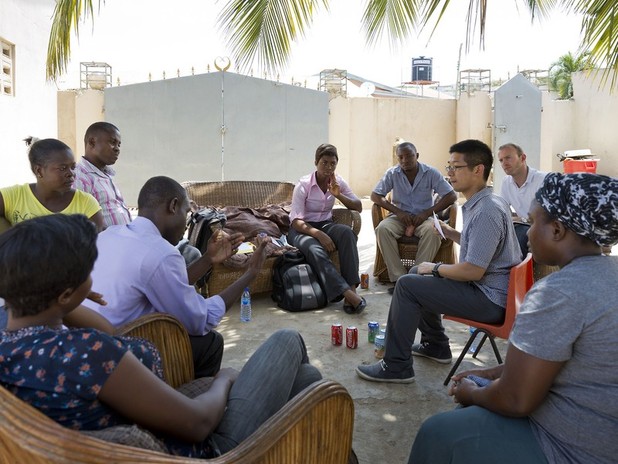August 01, 2013
Carla and her IDEO.org team give an update from their two-week deep dive in the field, gathering more insights about how money transactions are facilitated. Keeping in mind that asking the right questions is crucial, the team tells about their experiences playing around with new methods.
One of my biggest fears in doing formative research is not asking the right questions and missing key insights. Working for short stints in different cultures is especially risky in this regard. After all, similar behaviours could stem from different drivers across different cultures.
The emphasis on storytelling in human-centered design is particularly useful at helping me understand the broader context of people’s lives and drilling down into interesting behaviours.
But how do we gather these stories? Some methodologies are driven by the interviewer, asking questions and facilitating activities, while others are participant-driven. One participant-driven method, which we’ve found to be particularly effective in the field, asks a small group of participants to take photos of particular moments in their days. This method, often called PhotoVoice or photo narrative, is used across disciplines for qualitative data gathering, particularly during formative research.
Broadly speaking, this is the process:
- A small group of participants from a cohesive target group is asked to take photos for a week or two. The photo assignment can be about anything, but I’ve found that broad questions focusing on positive emotional moments works best - for example, “take photos of moments when you can be yourself” or “take photos of moments that make you feel proud.”
- Show participants how to use the cameras (the simpler the model the better), arrange a time to pick them up at the end of the process, and schedule another time to show the participants their photos as a group. Consider a lanyard.
- Pick up the cameras, develop the film, and print the photos. I recommend getting doubles so that participants may have a copy too!
- Arrange to meet with all participants together in a venue that is private and comfortable. Having drinks and snacks available is highly recommended. Really.
- During the storytelling session, give each participant a copy of photos to keep right off the bat. Then hand them the second copy from which they pick out the photos they like best. Pick out ones you are interested in too.
- Ask each photographer to show the group the photos (s)he picked and explain why (s)he took that photo. What else was happening when the photo was taken? How does the photo make the photographer feel? Encourage everyone in the group to ask questions and contribute their own, similar experiences.
Remember that this exercise is about the stories. Even crappy photos may yield good stories.
During our field visit, our team tried a very abbreviated version of this activity because of setbacks in our schedule. We recruited three participants and gave them disposable cameras to document a full days’ moments of exchange – payments, loans, or help of any kind. We realize that we could have benefitted from more days and a more emotional assignment, nevertheless, we got some good information that may not have come out in other methods.
Our first participant, a shop owner, took many photos of her customers, most of whom were children sent by their parents every day to buy a few items. This re-framed the way we thought of the shopkeeper’s relationship with her customers.
The liquor shop clerk also photographed his clients. One regular client asked that credit be extended to his aunt for a crate of drinks. The aunt has yet to pay back.
This exercise, although a truncated version of PhotoVoice, allowed us to narrow down the focus of our follow up visits and prompt interviewees on questions we might not have thought to ask!







